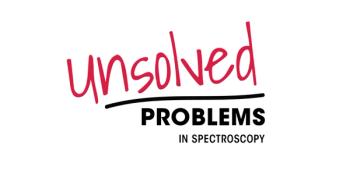
How Raman Spectroscopy Could Transform Hematology Diagnostics
A leading-edge review highlights the potential of Raman spectroscopy for fast, non-invasive diagnostics in hematology and oncology. By mapping biochemical fingerprints, this technology could one day help detect cancers, monitor treatments, and even predict immune responses.
In a recent study published in the journal International Journal of Molecular Sciences, researchers from the Institute of Hematology and Transfusion Medicine and the Medical University of Warsaw examine the potential of Raman spectroscopy (RS) to transform diagnostics in hematology and oncology. The study, led by Paulina Laskowska, Piotr Mrowka, and Eliza Glodkowska-Mrowka, explores RS’s unique ability to generate detailed molecular "fingerprints" of cells without any labels or dyes (1). Through this innovative technology, Raman spectroscopy could bring a new level of precision to detecting blood cancers, monitoring treatments, and differentiating between cancerous and healthy cells (1-3).
Challenges in Hematology Diagnostics
In traditional hematology, diagnosing blood-related diseases such as acute leukemia or lymphoma requires a blend of clinical expertise and complex testing methods. These processes are often lengthy and may be inaccessible for immediate results. As immunotherapies advance and new treatments emerge, the need for precise and rapid diagnostics has never been more urgent. Raman spectroscopy, a non-invasive technique that detects molecules by examining the way they scatter light, could address these challenges by providing real-time, detailed insights into cellular structure and composition, the authors note (1).
Raman Spectroscopy: How It Works
At the core of Raman spectroscopy lies the “Raman effect,” discovered in 1928, which capitalizes on inelastic scattering of light when photons interact with molecules. Most photons scattered off a molecule retain the same energy and frequency as the incident light, known as Rayleigh scattering. However, a small number of photons undergo energy changes due to interactions with molecular vibrations, producing a unique "fingerprint" spectrum based on shifts in wavenumber (measured in cm⁻¹). These shifts correlate directly with molecular vibrations, making it possible to deduce the molecular structure of cells. According to the research, the “fingerprint region” (400-1800 cm⁻¹) is particularly valuable in analyzing organic and biological compounds, while the “silent region” (1800-2700 cm⁻¹) remains devoid of interference, providing a clear space for detecting biochemical changes within cells (1).
Read More:
Key Advantages for Hematology Applications
Raman spectroscopy offers key advantages for hematology applications, including the ability to operate label-free, perform in vivo measurements, and use minimal sample sizes without altering cell viability (1-3). These qualities make it promising for analyzing blood cells, such as leukocytes, to assess immune response and track treatment effectiveness. Moreover, Raman spectra, graphs of scattered light intensity over frequency, can be mapped as Raman images. These maps allow researchers to visualize and quantify the distribution of specific biochemicals within cells, sometimes overlaying Raman images with optical or fluorescent microscopy for even greater detail (1).
Detecting Cancer and Tracking Treatments
This review highlights that RS-based predictive models for identifying blood cancers have shown high specificity and sensitivity, essential attributes for reliable diagnostics. Researchers have identified specific wavenumbers, such as 1002 cm⁻¹, which corresponds to phenylalanine, and 931 cm⁻¹, associated with left-handed helix DNA (1). Such precision in detecting individual molecular bonds allows Raman spectroscopy to differentiate between healthy and malignant cells with a high degree of accuracy. The study further emphasizes how these spectral “signatures” could be used to detect and monitor a range of cellular changes associated with cancer or immune status, making Raman spectroscopy especially valuable in monitoring immunotherapies, for example, like chimeric antigen receptor T-cell therapy (CAR-T) (1). CAR-T cell therapy is a personalized cancer treatment that involves extracting a patient’s T cells, genetically modifying them in a lab to add synthetic receptors that target specific cancer cells, expanding these modified cells in large numbers, and then infusing them back into the patient’s body to aggressively seek out and destroy cancer cells using the patient’s own immune system (4).
Challenges to Clinical Adoption of Raman Spectroscopy
Despite its promise, Raman spectroscopy faces technical challenges and limitations in clinical adoption. The study explains that RS systems often require customization, and results can vary significantly between laboratories due to differences in data acquisition and processing. The lack of standardized protocols, coupled with limited data repositories for RS spectra of human cells, adds to the challenges of cross-study comparability and data reproducibility. Standardization is essential for RS to become a mainstream clinical tool, as inconsistencies in methodology could impact the diagnostic value of Raman spectroscopy data in real-world applications (1-3).
The Need for Larger Datasets
Further, the research identifies an unmet need for studies involving larger, more diverse patient groups to improve RS’s diagnostic accuracy and generalizability. While single-cell analysis is a cornerstone of RS’s strength, statistical models would benefit from larger datasets to enhance their robustness. Currently, most RS datasets in hematology include relatively small sample sizes, often in the tens to hundreds, underscoring a need for broader studies and public databases of RS spectra to facilitate ongoing research (1-3).
Future Potential
The study concludes with an optimistic outlook on the future applications of RS in hematology and oncology. By enhancing sensitivity, precision, and non-destructive analysis, Raman spectroscopy could provide an essential tool for early detection, treatment monitoring, and even assessing immune response in real-time. However, as the authors stress, progress will depend on overcoming the technical and methodological challenges that have thus far limited RS’s integration into clinical settings (1-3).
Ultimately, this comprehensive review by Laskowska, Mrowka, and Glodkowska-Mrowka showcases Raman spectroscopy’s vast potential to meet the growing demands of modern hematology diagnostics, paving the way for a new era of non-invasive, rapid, and highly specific diagnostic tools in the fight against blood cancers and immune-related diseases (1).
References
(1) Laskowska, P.; Mrowka, P.; Glodkowska-Mrowka, E. Raman Spectroscopy as a Research and Diagnostic Tool in Clinical Hematology and Hematooncology. Int. J. Mol. Sci. 2024, 25 (6), 3376. DOI:
(2) Aday, A.; Bayrak, A. G.; Toraman, S.; et al. Raman Spectroscopy of Blood Serum for Essential Thrombocythemia Diagnosis: Correlation with Genetic Mutations and Optimization of Laser Wavelengths. Cell Biochem Biophys 2024, 82, 2989–2999. DOI:
(3) Li, S.; Gao, S.; Su, L.; Zhang, M. Evaluating the Accuracy of Raman Spectroscopy in Differentiating Leukemia Patients From Healthy Individuals: A Systematic Review and Meta-analysis. Photodyn Ther. 2024, 48, 104260. DOI:
(4) CAR-T Home Page.
Newsletter
Get essential updates on the latest spectroscopy technologies, regulatory standards, and best practices—subscribe today to Spectroscopy.





